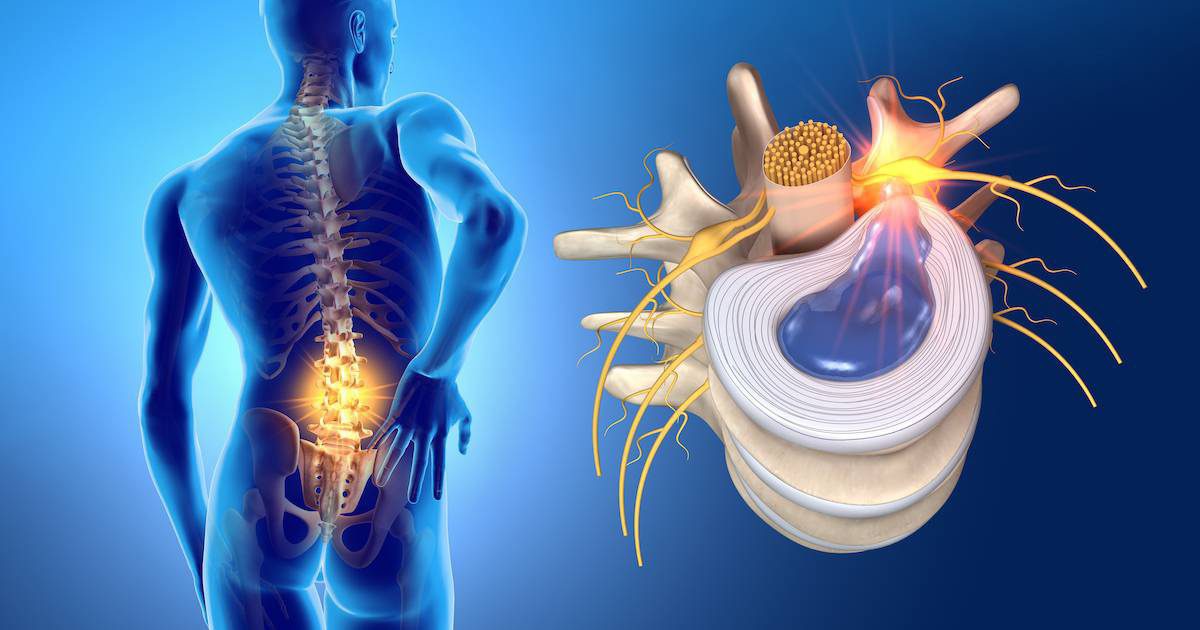Slipped disc, or a herniated disc (Cartilage between the vertebrae) is a pad of rubber-like membrane between the vertebrae. The disc has an outer ring and at its center, there is a core, which is made up of soft, shock-absorbing gel material.
Symptoms:
Hernias can occur in the lumbar and cervical spine. Symptoms depend on whether or not the disc is pressing on the nerve.
Pain in a leg or arm.
Numbness and tingling sensation.
Muscle weakness.
Some patients do not show any symptoms.
Causes:
Aging, generally found in aged persons
Repeated injuries or falls from a height.
Lifting heavy objects in a wrong way
Incorrect posture
Being overweight or obese
Risk factors:
Obesity leads to increased pressure on discs.
A job that requires great physical effort.
Genetic factors.
Smoking.
General Complications:
Increasing the severity of symptoms.
Dysfunction of the bladder and intestine.
Anesthesia of the saddle area.
Prophylaxis:
Exercise to strengthen the body core.
Maintain a good body position.
Maintain a healthy weight and quit smoking.
Diagnosis.
A physical and neurological clinical examination is done to check reflexes, muscle strength, ability to walk, and to determine the rate of touch, tingling and vibration sensations.
X-ray, magnetic resonance, and CT scan.
Neuro-examination: Nerve conduction study and electromyography.
Treatment:
Medications: analgesics and anti-inflammatories.
Using muscle relaxants and opioid analgesics.
Intramuscular and topical cortisone injections.
Physical therapy, dry needles and manual therapy.
Interventional Radiology Procedures
Surgery is only performed when there is acute pain or the above mentioned treatment do not work.
Surgical operations: Partial or total removal of the disc, with or without fixation of the vertebrae, depending on the situation and according to the decision of the surgeon.
Authored by –
| Dr. Ashraf Yousef, MBBCH, MSc, MD, PhD (Russia), MRCPS (Glasgow) | أشرف يوسف ، ماجستير ، دكتوراه في الطب( روسيا)، الزمالة البريطانية( جلاسكو) |
